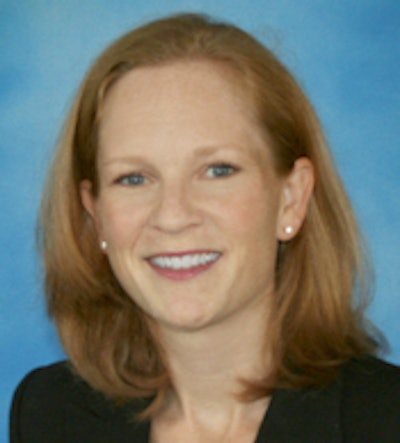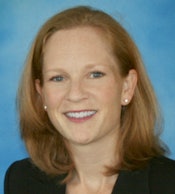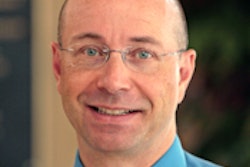
Radiologists' mammography screening performance improves not only when they read more mammograms, but also when they follow cases through the diagnostic process, according to a new study published in Radiology.
Research on the connection between mammography reading volume and performance has suggested that radiologists who read more mammograms tend to have lower false-positive rates -- although specificity results are mixed, according to lead author Diana Buist, PhD, from the Group Health Research Institute in Seattle, and colleagues. So what is it, in particular, about reading more exams that improves accuracy? Buist's team explored whether monitoring a patient's case throughout the diagnosis is part of the equation.
"The purpose of this study was to examine radiologists' screening performance in relation to the number of diagnostic examination workups after abnormal findings are discovered at screening mammography performed by the same radiologist or by different radiologists," the group wrote.
 Diana Buist, PhD, from the Group Health Research Institute.
Diana Buist, PhD, from the Group Health Research Institute.For the study, the researchers used data from 651,671 screening mammograms interpreted by 96 radiologists between 2002 and 2006 in the Breast Cancer Surveillance Consortium (BCSC), as well as data from cancer registries to evaluate radiologists' cancer-detection, sensitivity, and false-positive rates. The team investigated the association between the interpretation volume of recalled screening mammograms and screening performance, distinguishing whether the same radiologist interpreted both the screening image and the diagnostic image (Radiology, November 2014, Vol. 273:2, pp. 351-364).
Screening performance was based on the radiologist's initial reading of the mammogram linked to invasive or ductal carcinoma in situ diagnoses collected from tumor registries and pathology databases and diagnosed within the follow-up period, Buist and colleagues wrote.
Radiologists with a higher annual volume of workups for their own recalled screening mammograms had higher screening sensitivity and cancer-detection rates, while radiologists with a lower annual volume of any workups -- either their own or others -- had lower false-positive, sensitivity, and cancer-detection rates, the group found.
| Workup of own vs. any recalled mammograms | |||||
| Mean sensitivity rate | Mean false-positive rate | Mean cancer-detection rate | No. of women recalled per cancer detected | ||
| Annual volume of own recalled mammograms | |||||
| 0-25 exams | 81.1% | 6.7% | 3.1% | 17.4 | |
| 26-50 exams | 84.6% | 8.6% | 4% | 21.3 | |
| > 50 exams | 87% | 10.3% | 4.5% | 24.6 | |
| Annual volume of any recalled mammograms | |||||
| 0-50 exams | 80.8% | 7% | 2.9% | 18.1 | |
| 51-125 exams | 84.7% | 7.6% | 3.9% | 18.8 | |
| > 125 exams | 86.5% | 10.3% | 4.4% | 24.6 | |
Of the 96 radiologists included in the study, 38% performed the diagnostic workup for 25 or fewer of their own recalled screening mammograms, 24% performed the workup for 26 to 50 exams, and 39% performed the workup for more than 50 exams. For the workup of recalled screening mammograms from any radiologist, 24% of radiologists performed the workup for up to 50 mammograms, 32% performed the workup for 51 to 125 exams, and 44% performed the workup for more than 125 exams.
Therefore, greater volume of diagnostic workups for a radiologist who interpreted the screening mammogram translated to better screening performance because of the radiologist's involvement throughout the case, which included direct feedback on the radiologist's clinical decisions, according to Buist.
"We found that radiologists who work up at least some of their own recalls learn something by following a woman through the diagnostic process," she told AuntMinnie.com. "It seems to influence their overall ability to distinguish cancer."
One surprising finding, however, was that the radiologists' false-positive rate increased along with the number of their own recalls that they interpreted.
"Unfortunately, radiologists can have excellent sensitivity rates and terrible false-positive rates," Buist said. "And on the other side, those radiologists who don't read their own recalls may have low false-positive rates, but they also have low cancer-detection rates. The fact is, it's always a balancing act between cancer detection and false positives. The key is to get the sensitivity to a high enough level so that you can work on decreasing false positives."
Increases in false-positive rates associated with improved cancer-detection and sensitivity rates could be reduced by using strategies to help radiologists improve their interpretive performance, Buist and colleagues wrote. Examples include boosting performance thresholds or providing feedback by reviewing the lesion sampled for biopsy.
"Digital mammography has made it much easier to offer radiologists opportunities to go back and review cases, even if they don't interpret the recall exam," Buist told AuntMinnie.com.
In any case, the results suggest that radiologists can improve their screening performance by performing the diagnostic workup for their own recalled screening mammograms and receiving the direct feedback that comes from their initial decision to recall, according to the team.
"In order to improve their performance, radiologists need to read more mammograms, and some of them need to be diagnostic," Buist said.



















